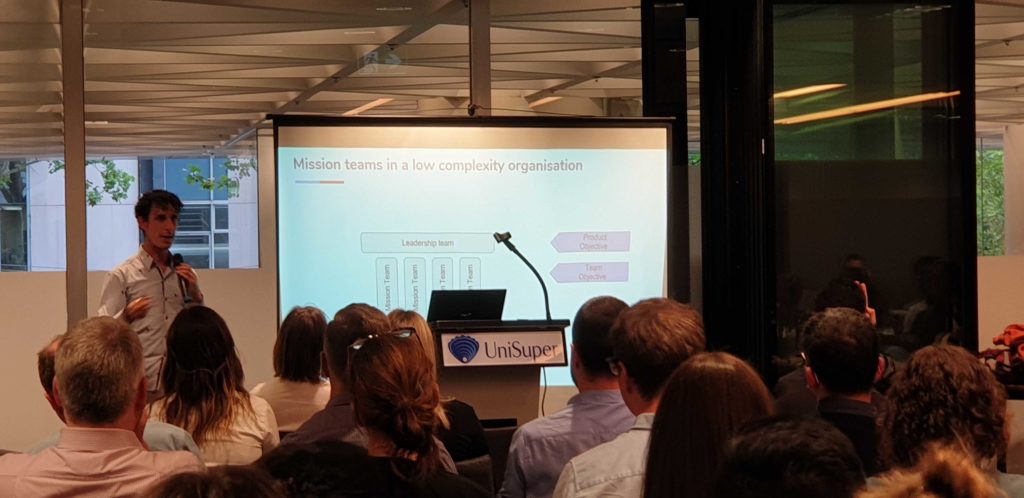The other Thursday we heard from Josh Centner, Head of Product & Delivery at PageUp about their journey to being a product-led company.
Josh started with a bit of background. PageUp began in 1997 as a custom software house building various things which translates into a very sales led company. Over time they realised companies often had the same issues and even the same requests which is when they decided to focus on building recruitment software. For years, the company grew – people, teams, features, products, revenue – though still was quite sales led.
They realised they needed to make a change if they were going to continue to grow and move faster. They had previously been the fast mover in the industry but the industry had changed with lots of big and small players making a difference. Shifting to a focus on product-market fit rather than custom features for clients which only work for that client was a key part of the change to stay ahead.
Josh outlined the pillars to work.
- Starts with people – Ensure everyone is well prepared and supported from a skills, mindset and culture perspective
- Process – Put metrics in place so you can understand if time is being lost and if improvements are working
- Strategy – Your strategy needs a story
- Culture – the culture at PageUp is amazing. Everyone is really nice, so it’s fun but people don’t hold each other accountable because they are worried about hurting someone’s feelings


As part of the people change and bringing teams together they focussed on creating cross-functional teams – which INCLUDED the sales crew. (In other words, sales needed to write their own Jira tickets!!)
In order to improve the process & start to shift culture, a couple of actons were taken. The company did a values assessment. This assessment was an important step to define where the company wanted to be and brought people together to define it. Turning the output of those sessions into statements was critical because it was the beginning of behaviour changes.
PageUp also ran innovation workshops and in-depth training on design thinking, jobs to be done and lean startup with the exec team. The goal was to make sure people at the top knew what was going on & could speak the same language as their team. While everyone across the company went through the training, some were not able to implement it right away. They were focused on business-critical work. This ended up being a mistake because, by the time those folk had a chance to put their training into practice, it was very much forgotten.
With all this change, you want to show progress. Josh used delivery metrics at first because they change quickly – you can see speed improving, output, costs going down, and begin to see predictability come into the work. The product metrics Josh used were the HEART framework to help link to the lagging indicators of retention, growth & costs. This brought comfort to the organisation and allowed room to invest in risk & new areas of product innovation.
In terms of building out the product strategy ensure you’ve covered your compelling boundaries –
- Story so far
- Under attack
- Purpose of this approach right now
- Markets and customers
- Deepening the competitive advantage
What would Josh do better next time:
- Have metrics ready before starting the transformation. Start tracking as soon as possible!
- Baseline the needed skills and have a long-term plan
- Have a strong product strategy ready to go as you roll-out to ensure alignment & enable autonomy
Josh Centner, Head of Product at PageUp
Josh has spent the last 10 years knee-deep in the world of startups and innovation. Attempting his own startups and consulting to both small and large organisations intent on creating disruption for themselves and their industries. After working with over 20 different organisations, Josh has deep insight into what does and doesn’t work when it comes to organisational transformation and product management.
Thank you to our Host: UniSuper
At UniSuper, our mission is simple—helping our members enjoy exceptional retirement outcomes underpins everything we do.

